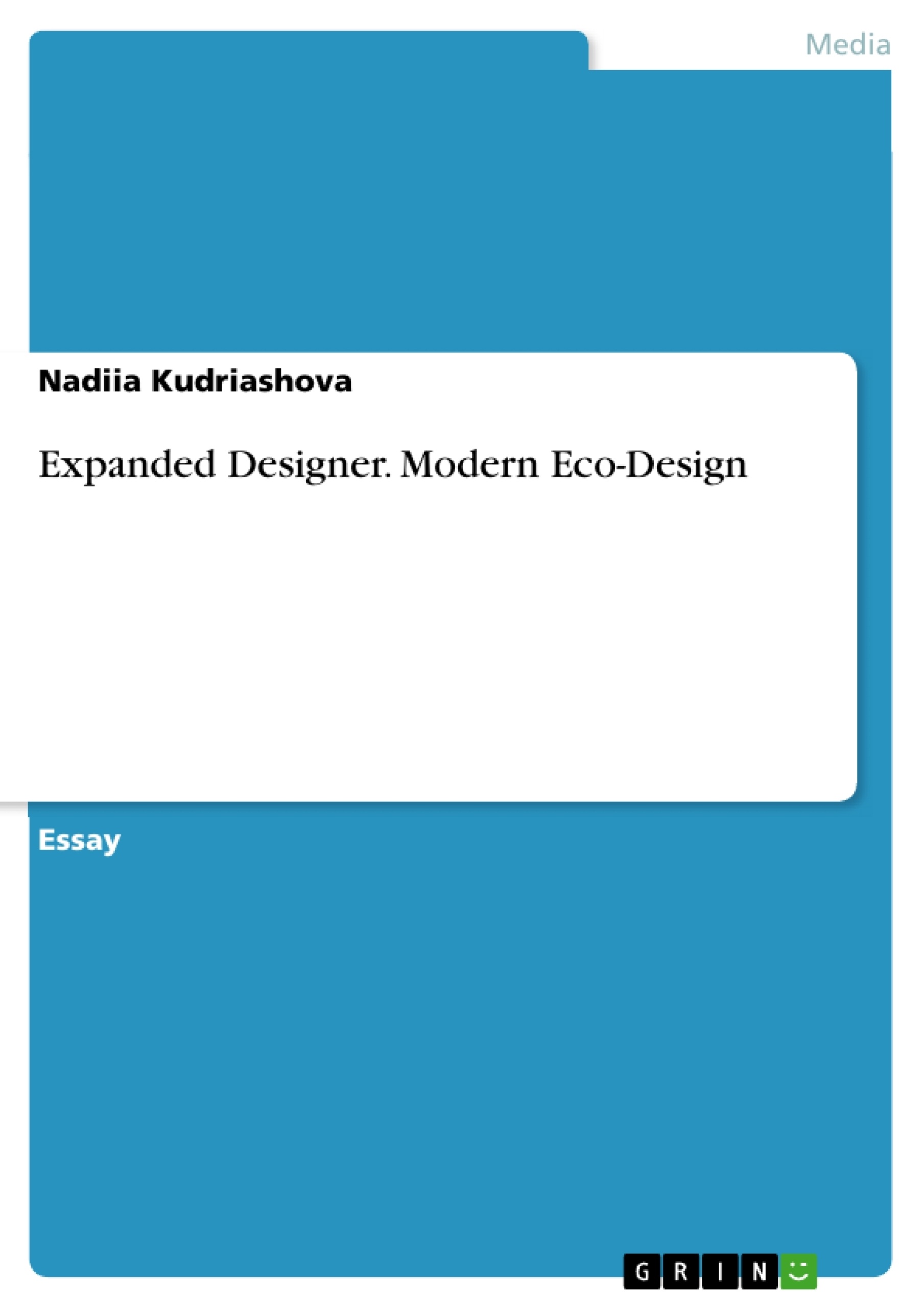In connection with the complication of the world, the expansion of the information field of culture, not only the object-spatial medium of the human environment changes, but also the value-semantic and aesthetic parameters of its functioning. In the third millennium, the problems affecting the human environment were aggravated due to the growing environmental crisis, etc. However, at the same time, new opportunities have opened up in improving information systems and intercultural integration which is gaining the pace, that allow expanding the possibilities of transforming living space, finding more adequate ways of adapting a person in adverse conditions. Hence, modern human pays special attention to the form of arrangement of his life activity, which has received the name "design."
In recent years, the question of the essence of design and its role in contemporary culture is increasingly drawing interest of not only practical designers, but also sociologists, culturologists, philosophers, and other representatives of social and humanitarian knowledge. Design, expressing the 'project culture' of a post-industrial society, emphasizes the process of changing aesthetic criteria and improving the industrial form. Strengthening the role of modern design is associated with the growth of global problems, and its tasks depend on solving ecological, urban, ethnographic, humanistic problems of culture.
Inhaltsverzeichnis (Table of Contents)
- Expanded Designer
- The Essence of Design
- Design and Culture
- Design as a World of Activity
- The Environmental Approach
- The Socio-Cultural Role of Design
- Design and the Development of Society
- Ecological Design
- Ecological Design as a Paradigm
- The Aesthetic and Ecological Ideals
- Examples of Ecological Design
- Sustainable Design
- Sustainable Design as a Philosophy
- Sustainable Graphic Design
Zielsetzung und Themenschwerpunkte (Objectives and Key Themes)
This text aims to explore the evolving role of design in contemporary society, emphasizing its connection to cultural, social, and environmental shifts. It examines the impact of design on shaping values, norms, and meanings within society, while also considering the influence of societal changes on design practices.
- The evolving nature of design in the context of a post-industrial society
- The increasing importance of environmental considerations in design practice
- The socio-cultural impact of design on shaping human values, norms, and behaviors
- The relationship between design and the development of society, including the role of the designer as a social actor
- The emergence of sustainable design as a philosophy and its impact on shaping consumer preferences and environmental practices
Zusammenfassung der Kapitel (Chapter Summaries)
- Expanded Designer: This chapter introduces the concept of expanded design, highlighting its role in shaping the human environment in the third millennium. It emphasizes the influence of cultural and social shifts, including the growing environmental crisis, on the development of design.
- The Essence of Design: This section delves into the nature of design, examining its role in shaping aesthetic criteria and improving industrial forms. It explores the emergence of new approaches in design, including the environmental approach, which emphasizes the design of elements surrounding humans, rather than individual objects.
- Design and the Development of Society: This section examines the reciprocal relationship between design and society. It highlights the influence of societal changes on design, while also emphasizing the influence of design on social values, norms, and behaviors. It highlights the responsibility of designers in shaping the socio-cultural environment.
- Ecological Design: This chapter introduces the concept of ecological design as a specialized field of design practice focused on harmonizing relations between society and the environment. It discusses the need to integrate ecological and humanistic values into design to shape a sustainable future.
- Sustainable Design: This chapter explores sustainable design as a philosophy of creating products and environments based on economic, social, and environmental sustainability. It highlights the role of sustainable design in shaping consumer preferences and promoting environmentally conscious practices.
Schlüsselwörter (Keywords)
This text focuses on the themes of design, culture, society, environment, sustainability, ecological design, sustainable design, and graphic design. It examines the role of design in shaping the human environment, promoting social responsibility, and fostering sustainable practices. Key concepts include the environmental approach to design, the socio-cultural role of designers, the impact of design on consumer preferences, and the importance of integrating ecological and humanistic values into design practices.
- Citar trabajo
- Nadiia Kudriashova (Autor), 2019, Expanded Designer. Modern Eco-Design, Múnich, GRIN Verlag, https://www.grin.com/document/455289



